This story was produced in collaboration with 9 Millones, a digital media outlet based in Puerto Rico. It was supported by the Economic Hardship Reporting Project.
With her six-month-old son balanced on her hip, Ana Arache walks through the beginning stages of a fruit tree forest on the island of Vieques, off the eastern coast of Puerto Rico’s mainland. It is July; the sun beats down and a constant breeze rustles the branches of growing guayabo, tamarindo, and mango trees. As she makes her way across the tropical-dry landscape, Arache points to the pink flowers of the acerola tree, or Caribbean cherry, a smile forming on her face. The trees have already given fruit, and the flowers mean they will bear more.
Arache then points to the ground, gesturing at the ashy brown soil filled with wood shavings. The material is the product of a program that took vegetative debris from Hurricane María and turned it into compost. “We planted this small tree with compost produced thanks to the success [of our program],” explained Arache, the founder of Isla Nena Composta, a nonprofit organization that manages Vieques’ community composting program.
Like the rest of Puerto Rico and its archipelago, Vieques was devastated twice in September 2017: first by the strong winds and rain of Hurricane Irma, followed two weeks later by Hurricane María, which made landfall as a Category 4. The luscious green foliage that defines Puerto Rico disappeared. María’s 155-mile-per-hour winds scattered branches, leaves, and tree trunks across streets, sidewalks, and roads.
In total, hurricanes Irma and María produced 2.5 million tons of debris in Puerto Rico, according to the American Society of Civil Engineers – equal to 2.5 to 3 years’ worth of landfill space.
The government needed to act quickly to clear paths in the debris so first responders and loved ones could bring assistance and essential items to people in need. In the rush to move the rubble, agencies made decisions that shortened the life of Puerto Rico’s already-strained landfills. They moved the debris to the roadside and left it there without separating the materials or diverting it to places where it could be processed or recycled. Eventually, most of it ended up in landfills.

In the years since, the crisis has only worsened. Because of climate change, hurricanes are becoming more intense and frequent in the Caribbean. Category 1 Hurricane Fiona, which made landfall in southern Puerto Rico on September 17, downed trees, homes, and power lines, demonstrating how even less potent storms can strain Puerto Rico’s limited landfill space. The government doesn’t have an archipelago-wide action plan to solve the problem. One study from the Federal Emergency Management Agency, or FEMA, estimates many of Puerto Rico’s landfills will reach capacity as soon as 2023.
Now, a group of organizations including nonprofits like Isla Nena Composta and Puerto Rico Composta Inc. and companies such as TAIS are racing to delay the islands’ landfills from filling up.
Puerto Rico has never been great at recycling. The Solid Waste Reduction and Recycling Act of 1992 set a goal that Puerto Rico recycle 35 percent of the waste it generates; in reality, that number has reached just 10 to 15 percent. Territory-wide, 44 percent of the material that ends up in landfills is compostable; of that number, 22 percent is vegetative material like trees, grass clippings, and bushes.
“With the crisis, the need, we got an opportunity,” said Arache. “María was the push to start taking composting seriously.”
The government of Puerto Rico first recognized its landfill crisis in the 1970’s. Two government agencies, the Puerto Rico Environmental Quality Board, or JCA for its Spanish acronym, and the Solid Waste Management Authority, or ADS, were formed to take care of the issue. But since their conception, they’ve been hindered by inadequate budgets, a lack of personnel, and limited powers to fully implement its proposals. JCA and ADS were absorbed by the Department of Environment & Natural Resources, or DRNA, in 2018 due to austerity measures. This has reduced the solid waste management of the entire archipelago to a single office within the DRNA.
Two-thirds of Puerto Rico’s landfills fail to follow U.S. Environmental Protection Agency regulations.
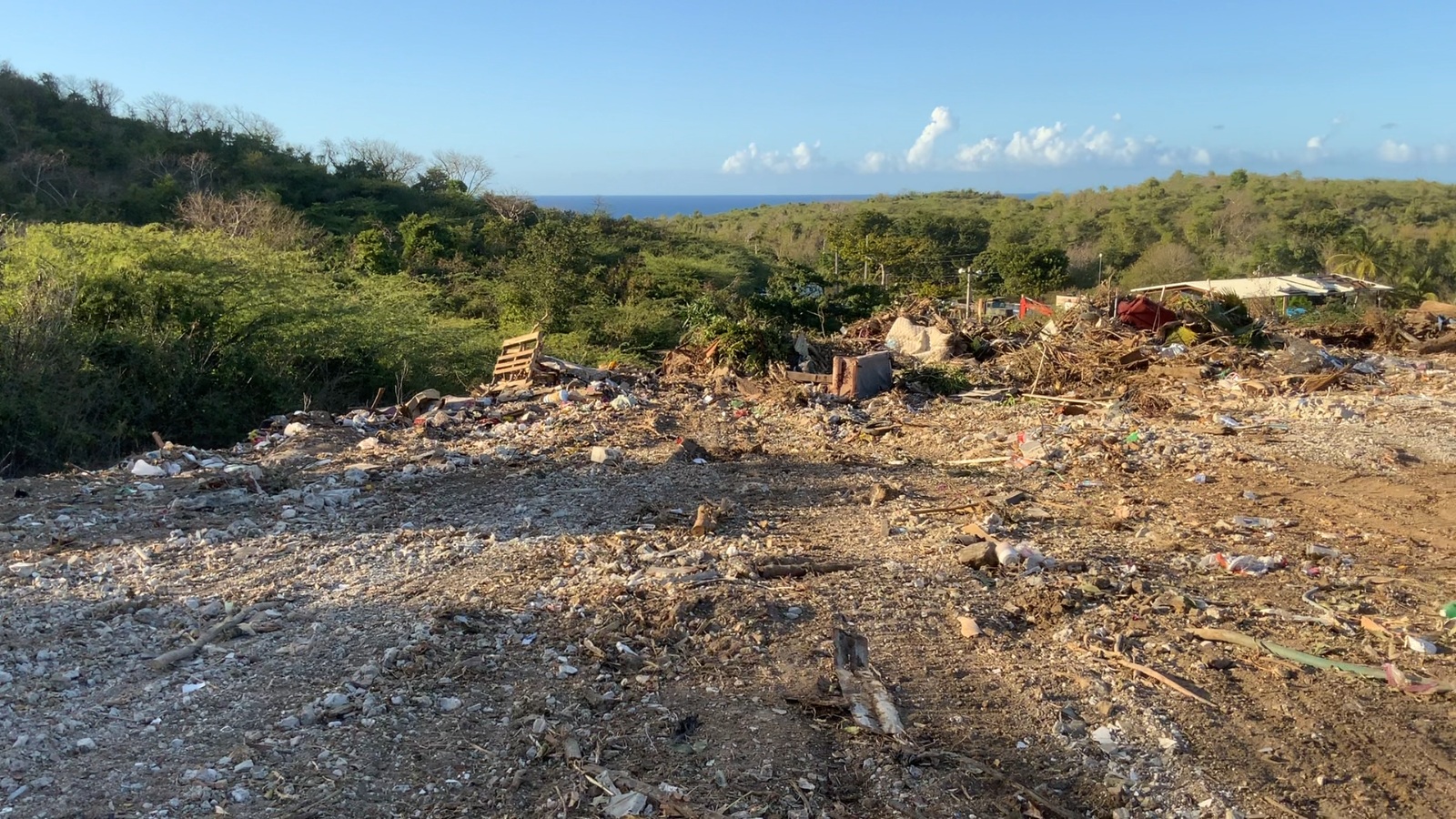
When many of Puerto Rico’s landfills were built in the 1950s and 1960s, they were designed without effective systems to limit gas emissions and leachate spills (liquids created when food scraps and vegetative debris decompose). The gas emissions contribute to climate change, while leachate spills can release heavy metals, ammonia, and other components that may be toxic, radioactive, and mutagenic to water bodies and nearby communities.
The Vieques landfill is no exception. Essentially, anyone can go to the landfill to dump their trash in sections such as residential garbage bags, scrap metal, electronics, and furniture – there’s even a space for dead animals. A lack of proper soil cover over the garbage has caused fires in the landfill, which affect air quality community-wide.
According to the EPA’s latest assessment, the Vieques landfill has no liner, a net that protects the soil and groundwater from leachate contamination. It also has no leachate collection system or groundwater monitoring program. The lack of monitoring is significant since the landfill is located adjacent to the Caribbean Sea and 8km (5 miles) from Vieques’ most important groundwater system. The nearest house is just 54 meters (0.03 miles) away and the closest school is 2 km (1.3 mi).
“There are days where the flies are unbearable,” said Melisa Molina, a municipal worker who lives near the Vieques landfill. But what has affected her health even more has been landfill fires. The smoke “invades the whole area” and has a strong, pungent smell. It was so “unbearable” at one point that she had to live with her parents on the other side of the island. “I’ve had asthma for 16 years and obviously it doesn’t get any better,” she added. Puerto Ricans have higher asthma rates than any other ethnic group in the United States.
As a collection of islands, Puerto Rico is in desperate need of new ideas to manage its consumption and waste strategies. There is only so much land available before communities run out of space for their garbage.
Practices like incineration are highly contested by communities and governmental agencies alike. That means that as landfills fill up, the archipelago must either start shipping garbage overseas or drastically revamp its recycling industry.

“The public policy that we have – and have had – has been unstable and inefficient,” said Francisco V. Aquino, a lawyer and member of Generación Circular, a coalition of organizations pushing for public policy that promotes a circular economy in Puerto Rico – an effort to reuse and recycle products locally as long as possible.
Generación Circular recently pushed for a bill (Ley 51-2022) to ban some single-use plastics. The law was approved in June and will go into effect in 2024. The group is also pushing for legislation to create a Circular Economy Trust that would gather data, provide oversight on the disbursement of public funding, and advocate for public policies that prioritize the health and well-being of Puerto Rico rather than private economic gains.
Part of the failure of the planning, according to Aquino, has to do with the lack of community integration. “There are parameters established top-down without taking into consideration what communities can do, what they’re willing to do, how you strengthen communities so they can participate in this economy, because an important part of the circular economy is that resources are not always going to the same hands.”
One of the most essential solutions is diverting and recycling organic materials.
In the months following hurricanes Irma and María, Arache’s group, Isla Nena Composta, received roughly 30,400 cubic yards of vegetative debris. After sorting out construction debris and crushing the vegetative materials, they ended up with approximately 17,000 cubic yards of clean and chipped vegetative materials. Eventually, that became 4,000 cubic yards of compost, about the size of an olympic pool.
“Sin composta no hay paraíso,” Arache said, laughing. It means that without compost, there’s no paradise, a play on a popular salsa song by El Gran Combo.
Arache describes compost as “the cornerstone of the circle of life” and believes that it is necessary for humanity to survive. Turning organic matter – vegetation, food scraps, or animal waste – into soil not only creates nutrients for the ground to produce food, but it also helps to grow trees and other plants whose roots are essential for retaining water and mitigating floods and other disasters related to climate change.
Isla Nena Composta has sold its compost to local gardeners and community agricultural projects which has helped sustain the nonprofit’s operations for almost five years. They have also donated compost to schools so they develop their community gardens.
Isla Nena Composta is a rare public-private partnership. The composting facility and the budding fruit tree forest is located in Vieques National Wildlife Refuge which, from 1941 to 2001, was used as a bombing and live-fire training range and ammunition storage by the U.S. Navy. Arache, who is also an environmental scientist and engineer, explained that before military intervention this area consisted mostly of tropical forest and wetlands. The Navy covered the land where Isla Nena Composta is located with asphalt to build a tarmac. That asphalt was removed after the Navy ceased its operations and recycled to make the road that now connects the wildlife refuge. According to Arache, the process transformed this section of the park into a semi-dry forest.
Today, the Vieques National Wildlife Refuge is managed by the U.S. Fish and Wildlife Service. The local office of the federal agency offered Arache’s organization five acres to process vegetative materials and an additional acre for the fruit forest. The composting site is filled with massive piles of vegetative materials (leaves, branches, tree trunks), cardboard, and wooden palettes. Since Hurricane Fiona, they have received a lot more material. “It’s beautiful,” Arache described via email.
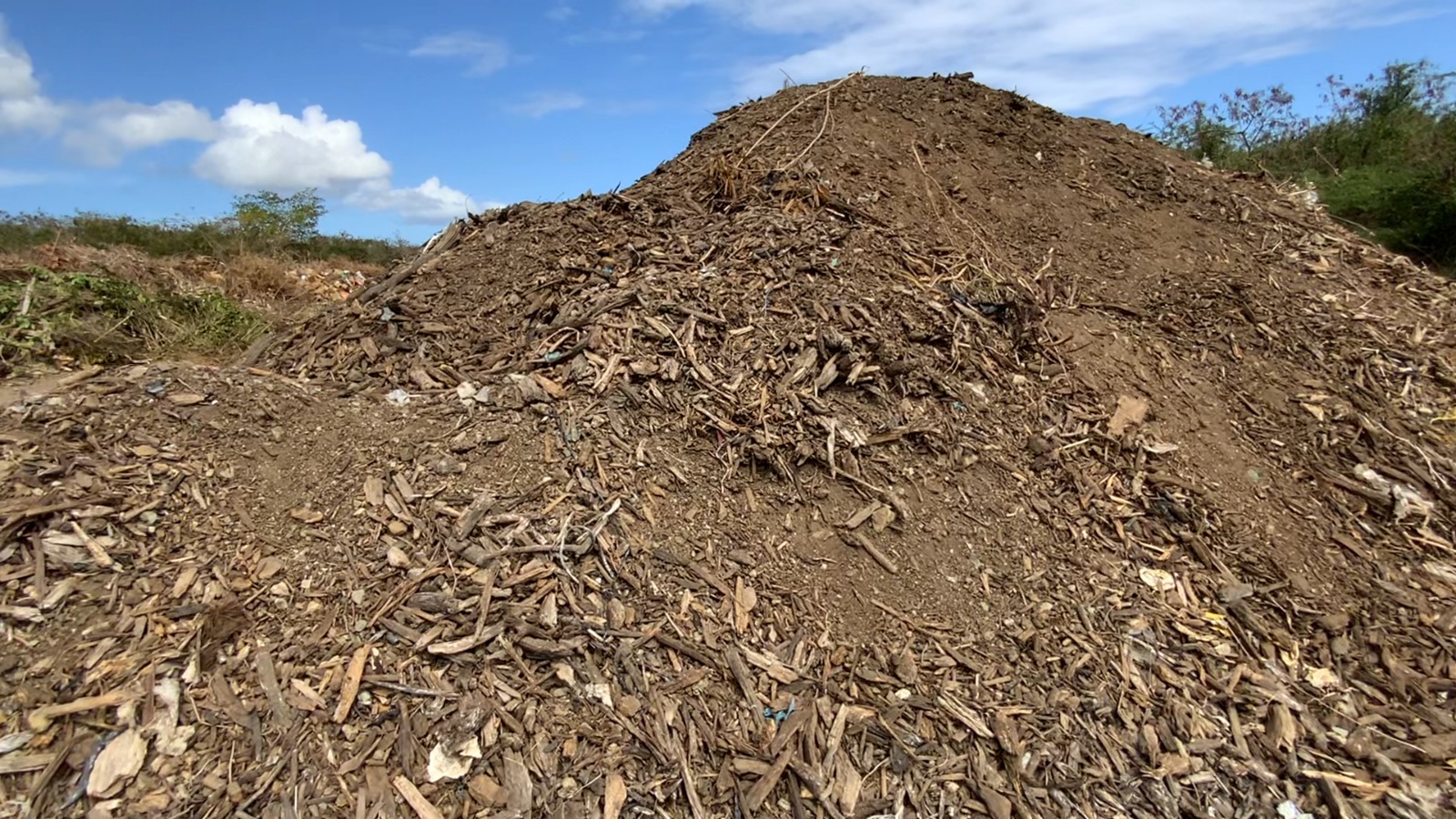
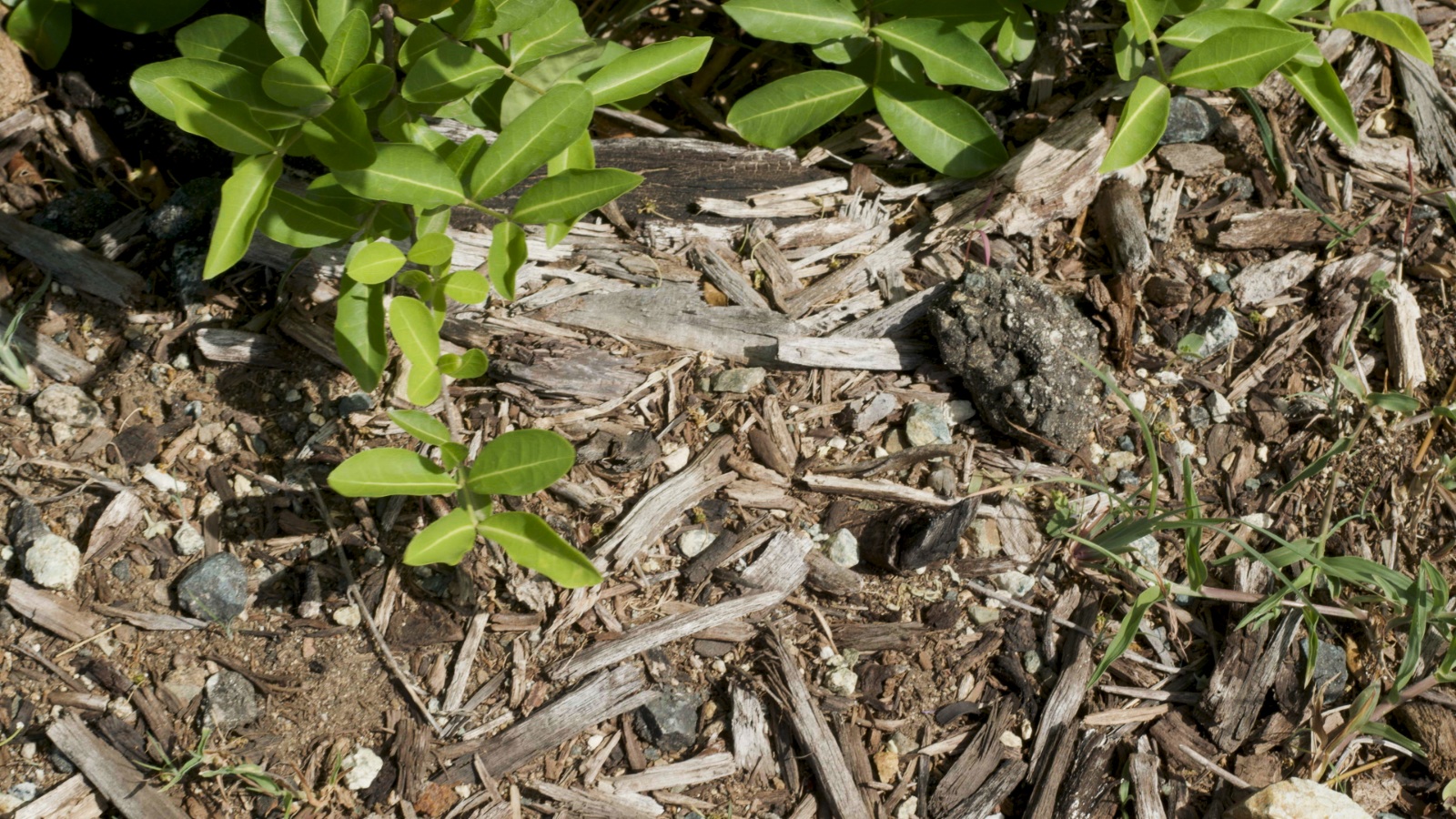
Among the materials, one small dark brown pile stands out – this is what’s left of the compost produced by the vegetative debris from Hurricane María.
“My goal has always been that everything compostable in Vieques be recycled so it doesn’t get to the landfill and we can transform it into fertile soil,” Arache explained. “Not only Vieques, my dream is to accomplish this in Puerto Rico and the whole world, but we have to start one community at a time.”
Less than a mile away from the compost pile are the offices of the local U.S. Fish and Wildlife Service, led by biologist Mike Barandiaran, who manages the refuge. He’s from New York, with Chilean and Native American descendancy, but proudly notes that Vieques has been his home for over 20 years. He shows us around the reserve, miles and miles of green foliage surrounded by the pristine blue Caribbean sea. Everywhere we go, horses are roaming around. Barandiaran wears feathers in his hat, gathered from diseased birds after Hurricane María. He pledges to wear them until Vieques fully recovers from the hurricane.
Barandiaran recalls that he first met Arache around 2012, when the Obama administration formed the Vieques Sustainability Taskforce. While many of the recycling efforts focused on managing paper, plastic, glass, and aluminum, Barandiaran remembers Arache repeatedly asking: “What about compost?”
“At the end of the day, a lot was discussed, a lot of decisions were made, nothing was implemented – but she never left,” Barandiaran said. “She kept persisting, and we know her as ‘Ana Composta.’”
At the beginning of her efforts, Arache’s intention was to establish the composting site on municipal lands, but the mayor’s office at the time did not see its value. “They were skeptical and asked, ‘For what? That’s not needed,’” she recalled. Yet as a biologist that works in conservation, Barandiaran understood Arache’s vision and decided to collaborate.
Arache and Barandiaran went together to ask the mayor of Vieques for help. Even though they didn’t get full support, they went forward with their plans and by 2016 they built the composting site in the Vieques Wildlife Refuge with retention ponds and infrastructure. But when Hurricane María made landfall just a few months later, it completely destroyed the site.
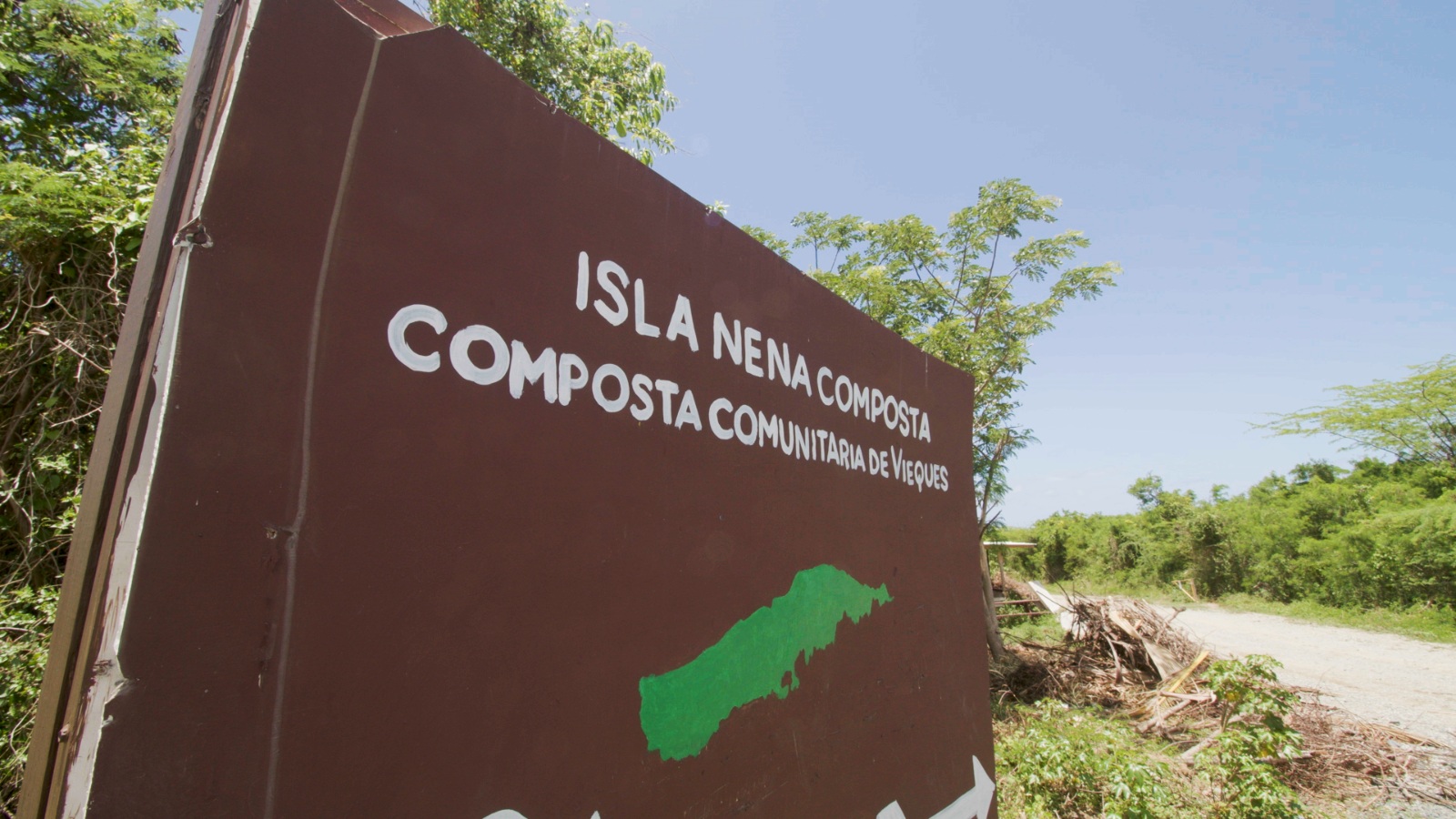
Shortly after the hurricane, Arache and Barandiaran met with the mayor again and explained that they could take the vegetative materials blown down by the storm; it was otherwise slated to go to the town’s landfill. But the mayor still didn’t budge. Arache and Barandiaran next met with FEMA and the U.S. Army Corps of Engineers to explain that they had the space to receive the materials. Although it took months, eventually the U.S. Army Corps of Engineers began transferring the vegetative materials to Isla Nena Composta.
Once the federal agencies were on board, the mayor decided to support the program as well. “When you have a government agency working with a community organization, they complement each other very well because the government agency can recognize and give them legitimacy,” Barandiaran added.
In 2021, there was a change in the local government – and its mindset toward composting. José ‘Junito’ Corcino Acevedo, the current mayor, is a former commercial fisherman who had previously purchased compost from Isla Nena Composta and understood the project’s value.
The legislative assembly of Vieques has since signed an ordinance that decrees that any vegetative material on Vieques should be processed by Isla Nena Composta. The municipality, U.S. Fish and Wildlife, and Isla Nena Composta also signed a collaborative agreement that gave the nonprofit a municipal contractor that receives the vegetative material from Monday to Friday. This allows Isla Nena Composta to have steady hours and gives Arache time to work on critical education and fundraising efforts.
Mayor Corcino says that he wanted to work with Isla Nena Composta because it has the potential of extending the life of the landfill, to control brush fires at the garbage dump, and because it reduces disease carriers such as rats, mosquitoes, ticks, and cockroaches.
After Hurricane Fiona hit the island last month, the municipality hired two companies to take vegetative debris to Isla Nena Composta. “It has been our salvation,” explained Corcino Acevedo in a phone interview a few weeks after the storm. “Almost all the vegetative material has been taken to Isla Nena Composta instead of the landfill.”
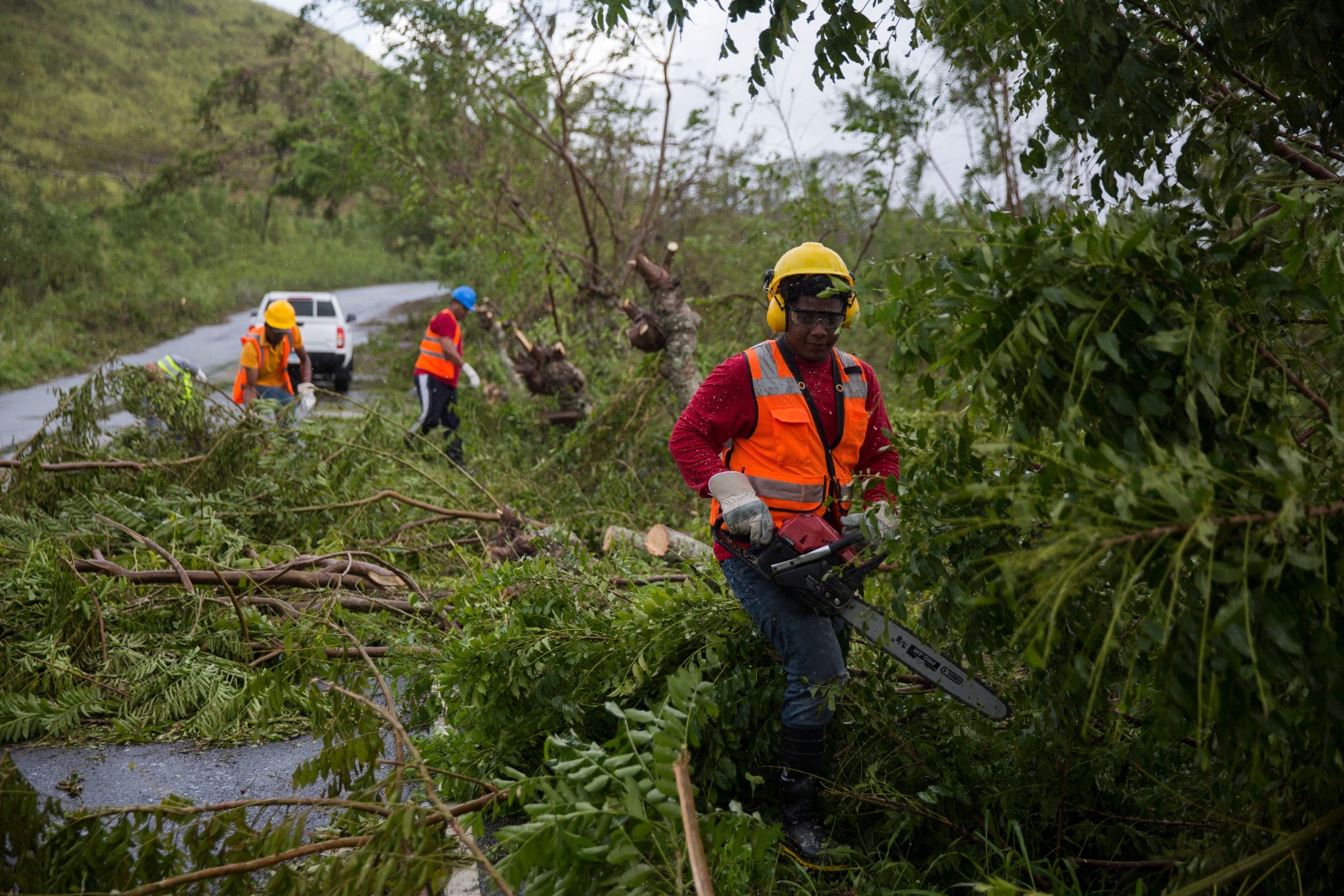
“That’s a large amount [of material] being taken to a place that doesn’t affect the life of the landfill,” said Corcino Acevedo.
Between the required equipment, transportation, and labor costs, solid waste management is an expensive industry. As nonprofits, community groups, and local small businesses step in to address Puerto Rico’s landfill crisis, they’re running into major financial hurdles.
Between 2017 and 2021, hurricanes Irma and María, earthquakes, and the pandemic all worsened Puerto Rico’s landfill crisis, which moved Governor Pedro Pierluisi to declare a landfill emergency in early 2021, and with it making funds available to bring landfills into compliance. But almost a year has passed and no money has been distributed. Community organizations say they are having a hard time accessing that money because of bureaucracy and a lack of federal understanding of local conditions.
According to María V. Rodríguez Muñoz, director of the land contamination control area for the Department of Natural Resources in Puerto Rico, the agency is currently planning a public hearing to listen to nonprofits and community organizations working with solid waste management.
Isla Nena Compost has had to rely on the U.S. Fish and Wildlife equipment to maintain its composting and fruit tree facility, but it lacks the equipment to process the new raw material it has collected. The U.S. Army Corps of Engineers hired a company to grind the vegetative debris from Hurricane María, but their contract ended after the hurricane clean up concluded. Industrial shredders can cost hundreds of thousands of dollars – money the organization does not have. It also needs funds to train and employ knowledgeable staff.
“The biggest challenge is to keep operating with limited resources. We need basic equipment to move the materials, grind them, and be able to market [the resulting compost], and in this way sustain the operation,” said Arache, who has applied for public funding with no avail. Her goal is to make Isla Nena Composta financially viable. “We are having some success but we could accelerate the process if the government would support us with subsidies that are available but never arrive,” she said. “The federal government has money, I don’t know what happens if they don’t get it where they need to.”
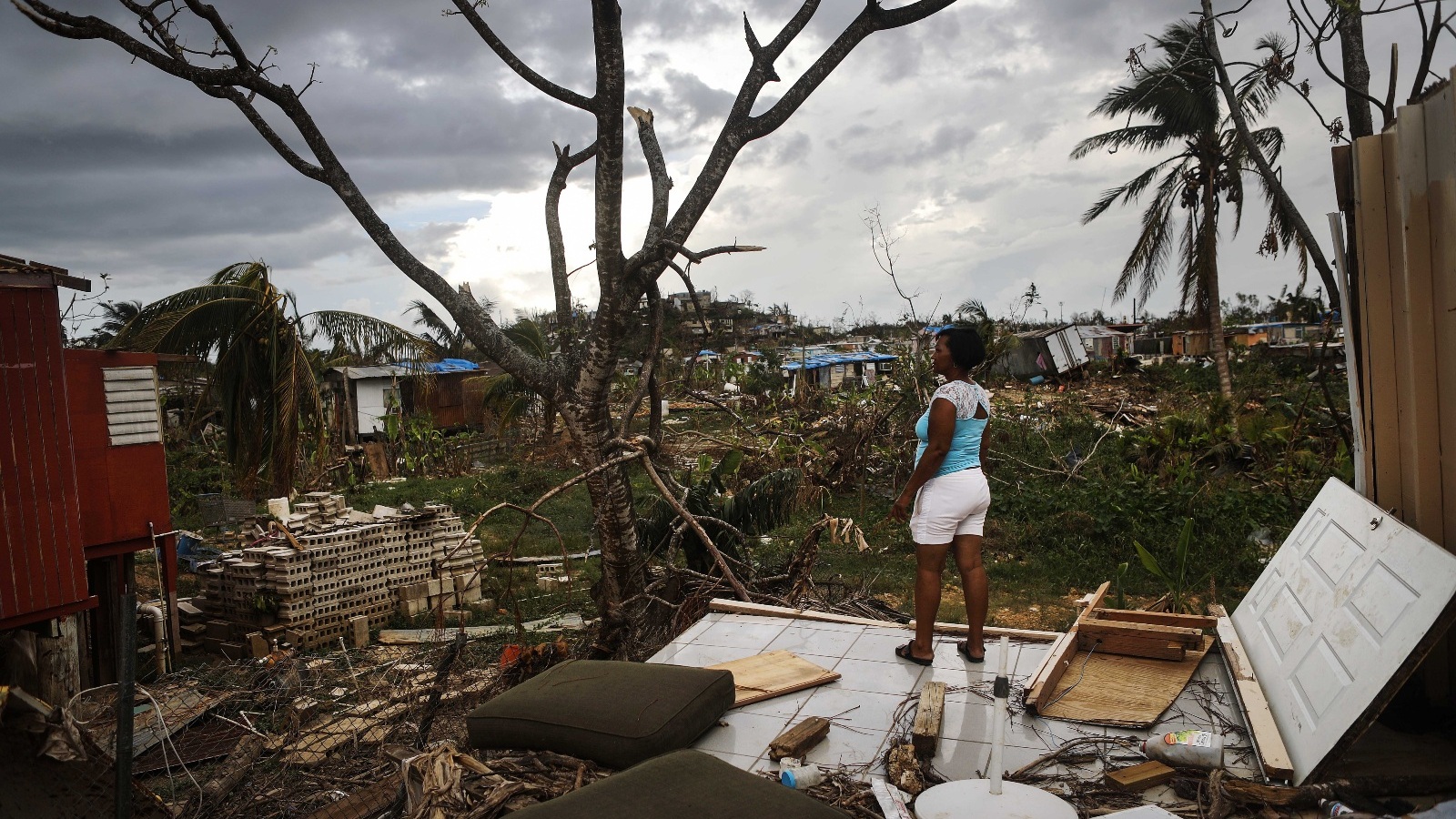
As more intense storms hit Puerto Rico due to climate change, and more power outages cause food waste and damaged appliances, there is a critical need to invest in solutions.
“The goal is that a local NGO can create dignified jobs for local people,” Barandiaran of the U.S. Fish and Wildlife Service said. “When Isla Nena Composta is operating as we envision, it can generate 20 [recurring] jobs, that’s 20 families impacted.” Because Vieques has 2,405 households, impacting 20 of those households is essential to help retain citizens in an island that has been severely impacted by the economic recession and emigration and where more than half of its population lives below the poverty line.
Aside from the setbacks, Arache is committed to her mission because she believes that recycling and composting are essential for humanity’s survival.
“If the Earth recycles, the universe recycles, then we need to recycle to continue the circle of life,” she said.
Anthony Rivera and Marian Pichs of Film Translation Board translated and edited this story from English to Spanish.
This story was originally published by Grist with the headline Disaster debris is pushing Puerto Rico’s landfills to the brink on Oct 21, 2022.
This content originally appeared on Grist and was authored by Camille A. Padilla Dalmau.
Camille A. Padilla Dalmau | Radio Free (2022-10-21T10:45:00+00:00) Disaster debris is pushing Puerto Rico’s landfills to the brink. Retrieved from https://www.radiofree.org/2022/10/21/disaster-debris-is-pushing-puerto-ricos-landfills-to-the-brink/
Please log in to upload a file.
There are no updates yet.
Click the Upload button above to add an update.